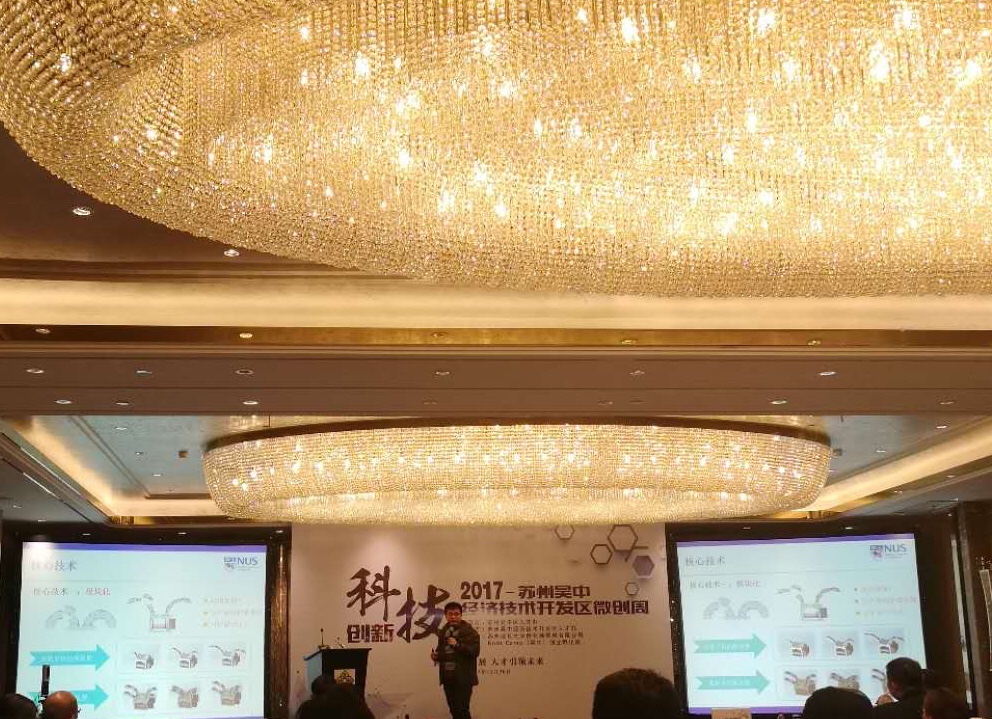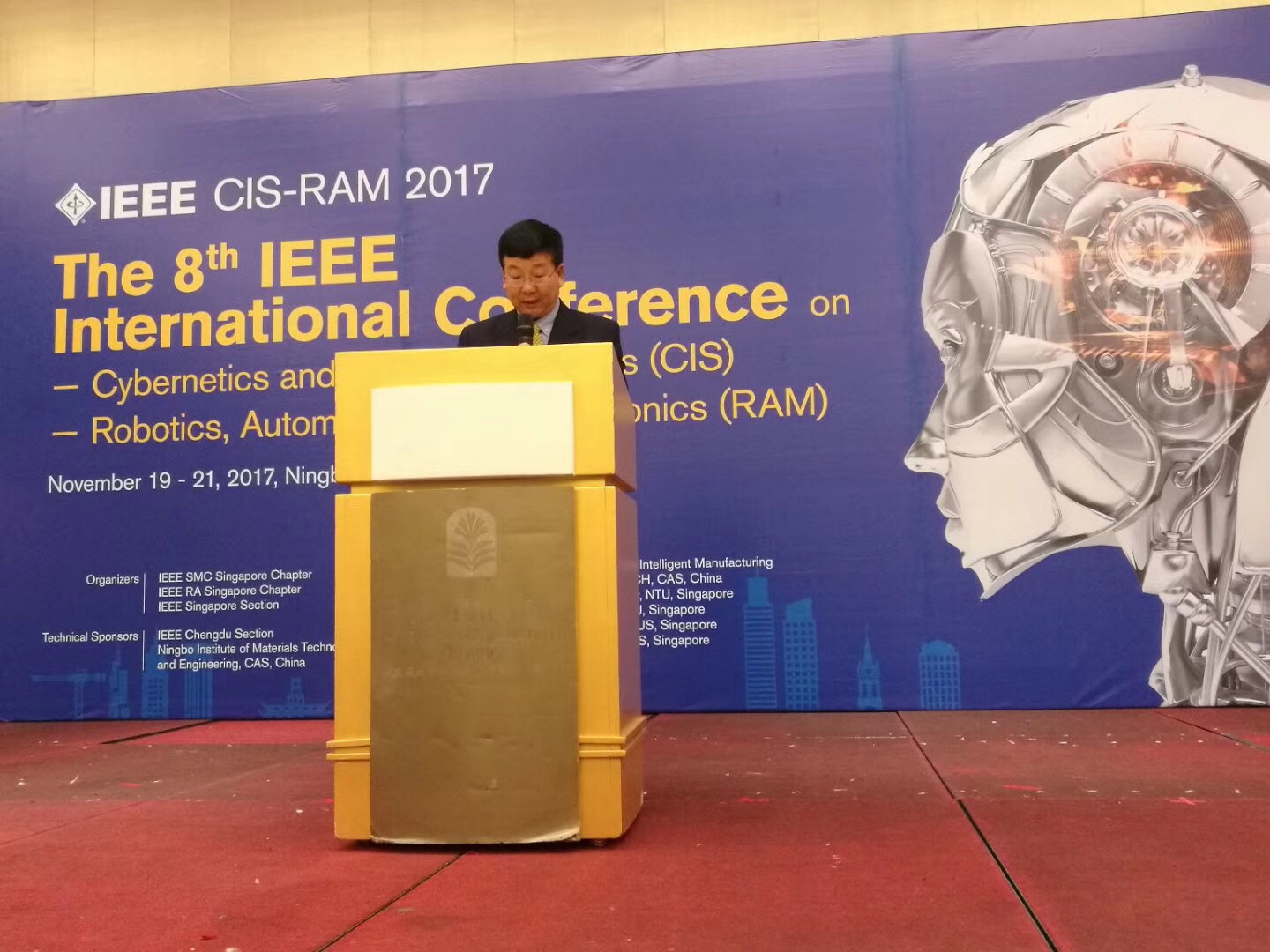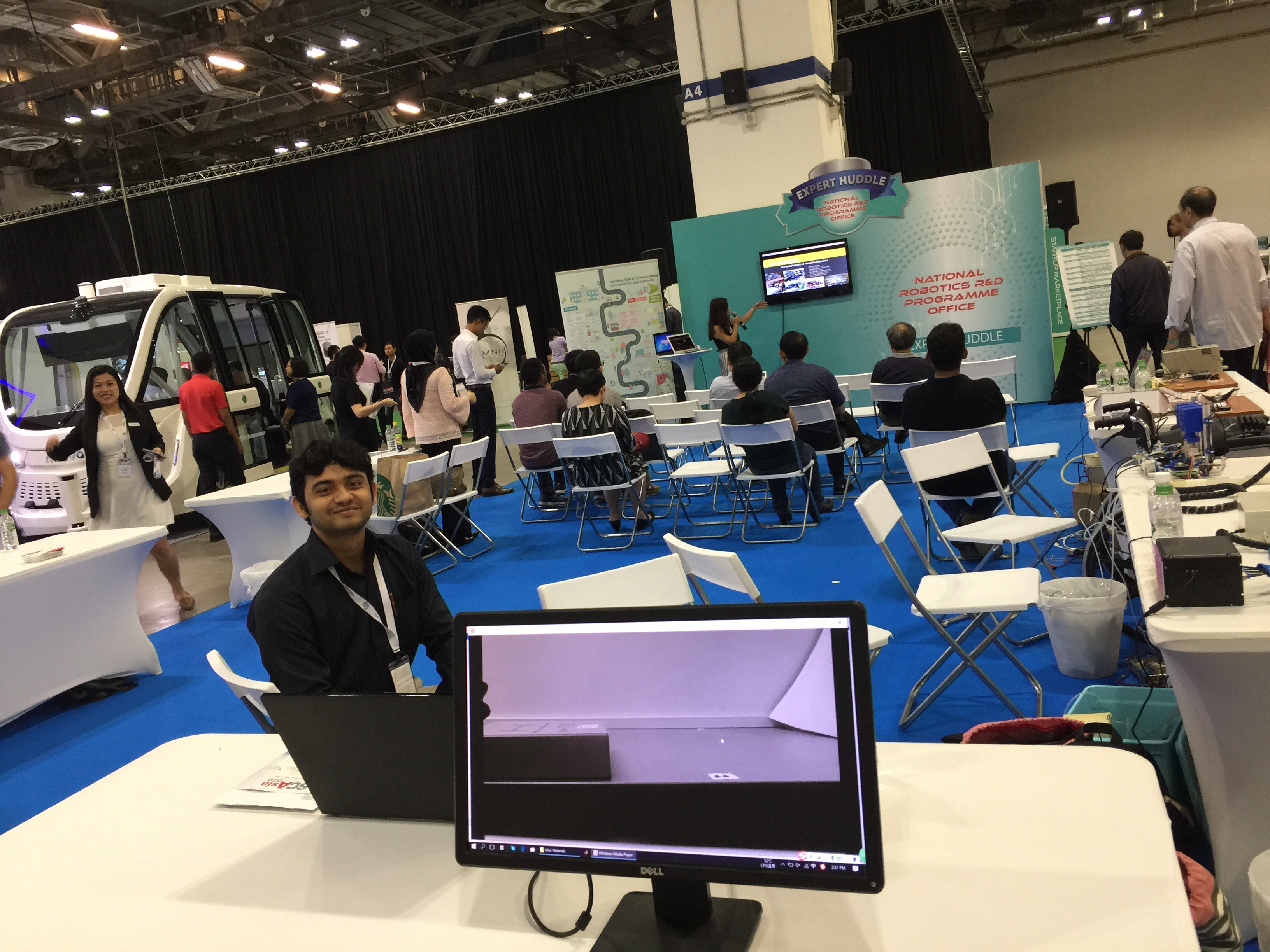NUSRI Team showcase our robotic and sensing devices at Bootcamp event

NUSRI Team showcase our robotic and sensing devices at Bootcamp event

This paper presents the development of a novel 2D Fiber Bragg Grating (FBG)-based micro-force sensing design for detection of catheter tip-tissue interaction forces. A miniature and symmetrical force-sensitive flexure-based catheter distal sensor has been prototyped, and four optical fibers inscribed with one FBG element each have been mounted on it for force and temperature decoupling and detection. The axial property of the tightly suspended fiber configuration has been utilized with a pre-tensioned force, and the embedded FBG element can be stretched and compressed to sense the force-induced and temperature-caused strain variations. The proposed configuration can achieve an improved resolution and sensitivity than the light intensity modulation-based approaches, and avoid the limitations closely associated with the commonly direct FBG-pasting methods such as chirping failure and low repeatability. Finite element modeling (FEM)-based simulation has been implemented to investigate the flexure performance and improve the design. The decoupling approach has been proposed based on the simulation results and implemented to separate and determine the force and temperature. The force-sensing flexure prototype has been calibrated to achieve a resolution of around 4.6mN within the measurement range of 0~3.5 N. Both static calibration experiments and in-vitro dynamic experiments have been performed to prove the feasibility of the proposed design. The decoupling capacity of force and temperature will benefit its broad implementations in generalized intravascular catherization procedures.
Magnetic resonance imaging (MRI) is beneficial for imaging-guided procedures because it provides higher resolution images and better soft tissue contrast than computed tomography (CT), ultrasound, and X-ray. MRI can be used to streamline diagnostics and treatment because it does not require patients to be repositioned between scans of different areas of the body. It is even possible to use MRI to visualize, power, and control medical devices inside the human body to access remote locations and perform minimally invasive procedures. Therefore, MR conditional medical devices have the potential to improve a wide variety of medical procedures; this potential is explored in terms of practical considerations pertaining to clinical applications and the MRI environment. Recent advancements in this field are introduced with a review of clinically relevant research in the areas of interventional tools, endovascular microbots, and closed-loop controlled MRI robots. Challenges related to technology and clinical feasibility are discussed, including MRI based propulsion and control, navigation of medical devices through the human body, clinical adoptability, and regulatory issues. The development of MRI-powered medical devices is an emerging field, but the potential clinical impact of these devices is promising.
This paper has proposed a novel fiber Bragg grating (FBG)-based hybrid displacement and force sensor with a compact structure and excellent resolution by using the transverse property of a tightly suspended and slightly bent optical fiber. The optical fiber, embedded with an FBG element, has been suspended with its ends fixed on the sensor frame and implemented with a pre-tension force by the displacement loading along its vertical direction to form a bent shape. A conversion mechanism has been designed to convert the displacement and force inputs into the transverse movement of different points along the suspended fiber. Experimental results show that the displacement sensitivity and force sensitivity are −219.69 pm/mm within the range of 0–2.5 mm and −345.2 pm/N with a high calculated resolution of 2.9 mN, respectively. Results from both the displacement and force experiments have illustrated a close agreement with values from commercial sensors.
The objective of this project is to propose an alternative design for hyper-redundant, tendon-driven, discrete-joint manipulators which allows for independent removal of intermediate modules, as well as to conduct a comparative study between two alternative forms of tendon-driven actuation
systems, twisted string actuation and spooling actuation. Hyper-redundant discrete-joint manipulators have individual modules connected in series and when paired with a tendon-driven actuation system, intermediate modules cannot be isolated. This lack of modularity limits the ability to quickly replace intermediate modules without the need to disassemble the entire system. Efficacy of modularity is measured by the fastest time required to remove and add intermediate modules to a series of modules.
Comparison between maximum force generated by twisted string actuation and spooling actuation is done. The effects of different materials and diameter on the maximum force generated for twisted string actuation are also tested. Subjects are able to add and remove intermediate modules from the proposed design faster than a benchmark design. Twisted string actuation tests suggest that it is able to generate a larger force as compared to spooling actuation. Different string material and diameter are
also shown to affect the maximum force generated. If needed,further research should be done to better quantify factors which contribute to failure of the string in twisted string actuation.

Two papers from our team were presented by Dr Ren:

